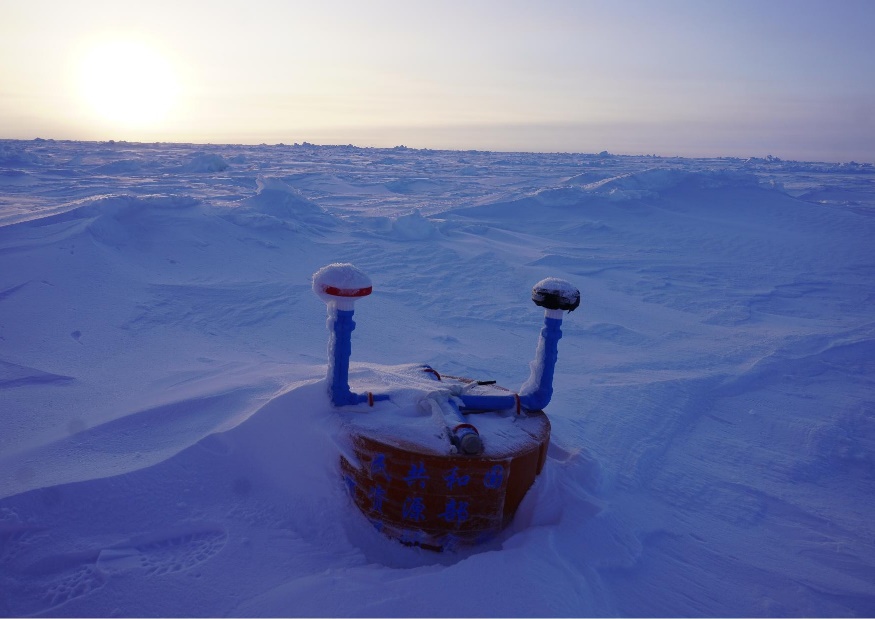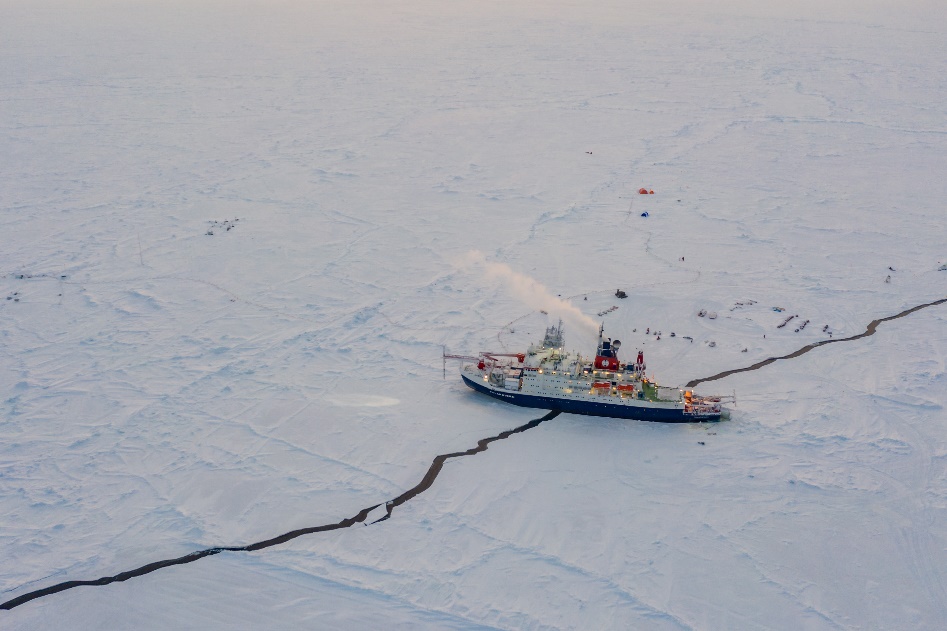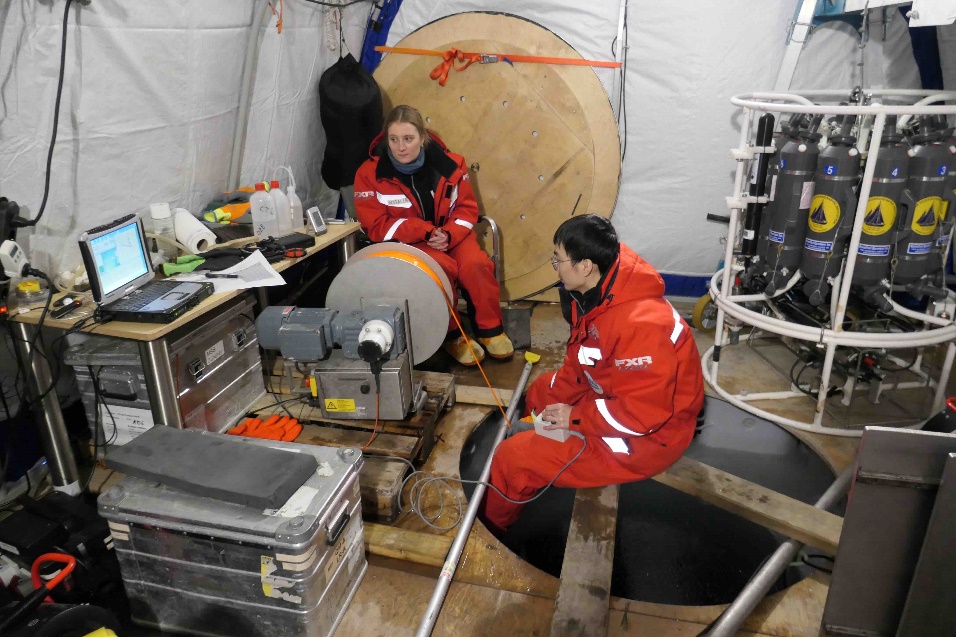Researchers of FIO Participated in the MOSAiC Expedition
Since the 21st century, the temperature in the Arctic Ocean is getting warmer, and the sea ice in the Arctic Ocean is decreasing rapidly. In the context of the rapid reduction of the sea ice in the Arctic Ocean, the Air-Sea-Ice interaction in the Arctic region and the "Atlantification" of the Arctic Ocean have attracted extensive attention. In order to deepen the understanding of the above-mentioned scientific problems, assistant researcher Kong Bin and senior engineer Ma Xiaobing from the First Institute of Oceanography (FIO) participated in the field observation task of Multidisciplinary drifting Observatory for the Study of Arctic Climate (MOSAiC) and obtained a large number of physical oceanography and atmospheric field observation data in the Eurasian Basin area of the Arctic Ocean.
The "MOSAiC" project is initiated by the German Alfred Wegener Institute (AWI), with the "Polar Star" icebreaker as the main platform. The "Polar Star" set sail from Tromsø, Norway on September 20, 2019, stopped at the Eurasian Basin area of the Arctic Ocean, drifted with the transpolar drift stream, and returned to Bremerhaven, Germany on October 12, 2020, and completed the observation of manned ice station for a whole year. It is hoped that through the acquisition of one-year observation data in the Arctic region, the atmosphere-sea ice-ocean-ecosystem coupling process in the central Arctic sea area will be further understood, and the ability of arctic weather forecast, sea ice prediction, and climate prediction will be improved. The "MOSAiC" project is divided into five segments, involving more than 600 scientists and engineers from 19 countries. The "MOSAiC" project is the most comprehensive drifting ice station project in the world with the most complete disciplines and supporting capacity. The disciplines cover physical oceanography, atmospheric physics, atmospheric chemistry, sea ice, marine ecology, and marine biogeochemistry, which is a comprehensive voyage oriented by a new understanding of the rapid changes in the Arctic region.
On September 13, 2019, senior engineer Ma Xiaobing participated in the deployment of ambient buoys of the first segment of the "MOSAiC" project, and he returned to Qingdao on November 4th, 2019. Assistant researcher Kong Bin participated in the field observation work of the third segment, and he left on January 22, 2020, and returned to Qingdao on July 16, 2020. During this "MOSAiC" expedition, FIO deployed the ice-based buoys developed by ourselves, and successfully recovered them, and obtained the observation data of mixing layer of long time series. The researchers of FIO have participated in most of the operations of the physical oceanography team of the "MOSAiC" project. During the third segment, continuous CTD, ADCP, and turbulence data of the Arctic Ocean from winter to ice melting period were obtained, which filled in the blank of ocean current and turbulence data in winter in this area, and provided data support for further understanding the rapid changes of Arctic environment.





